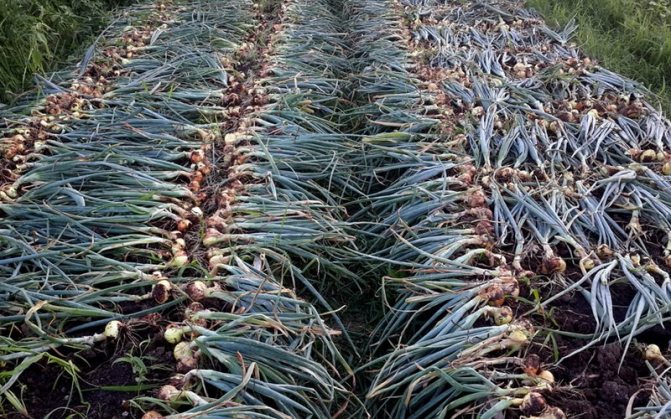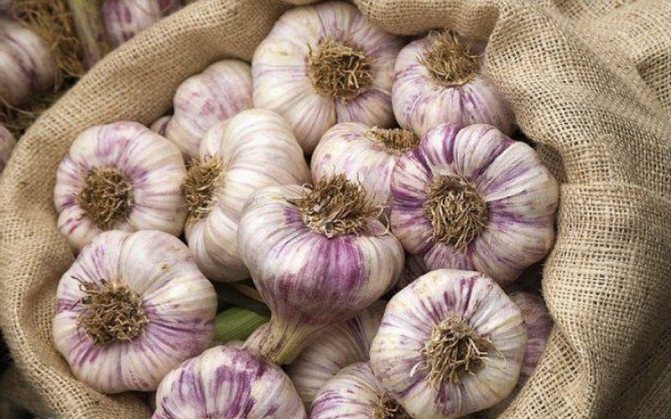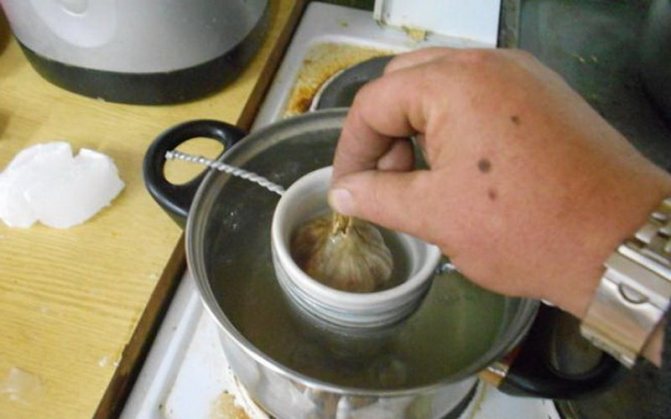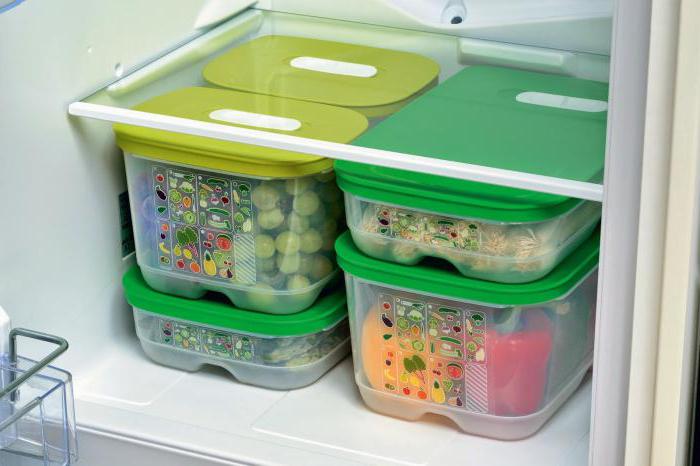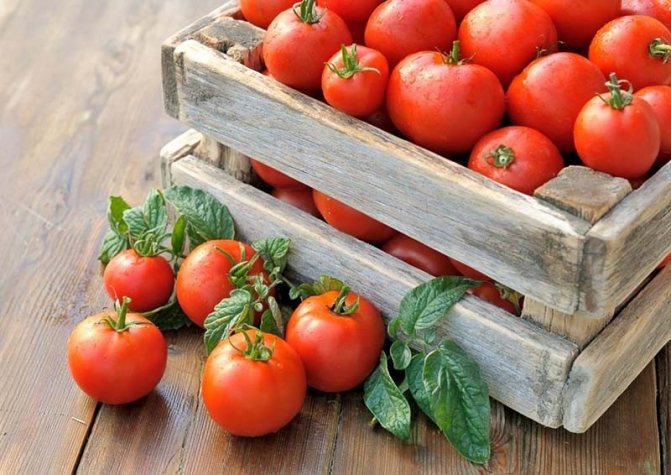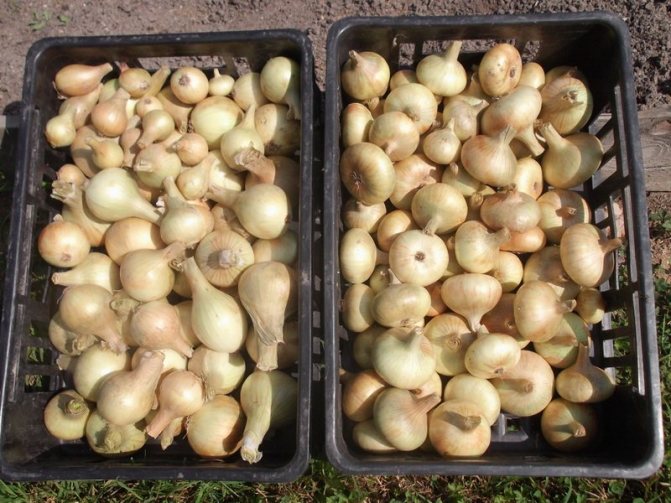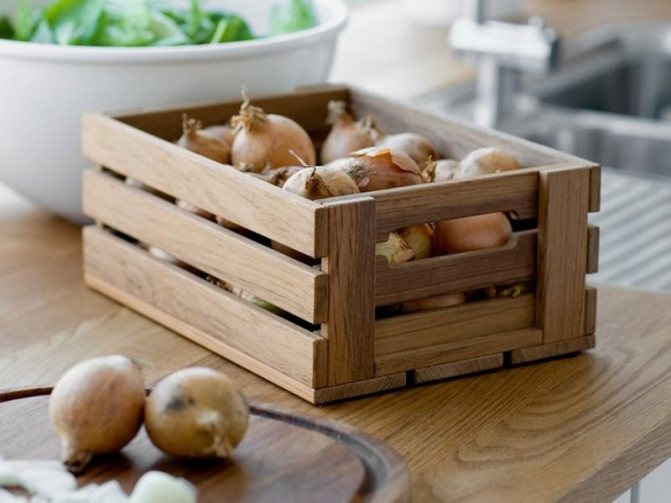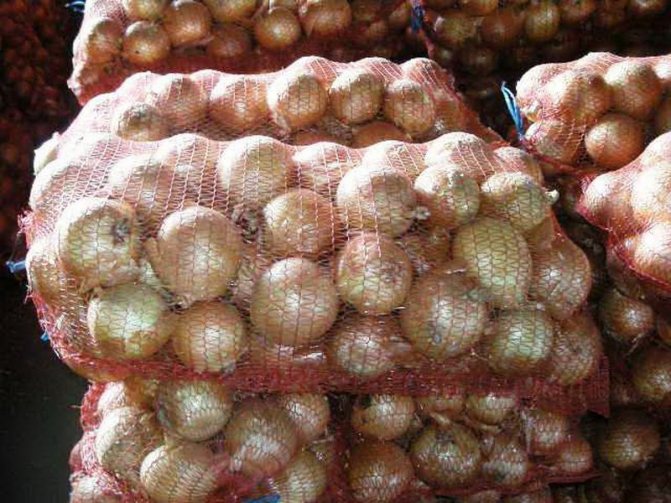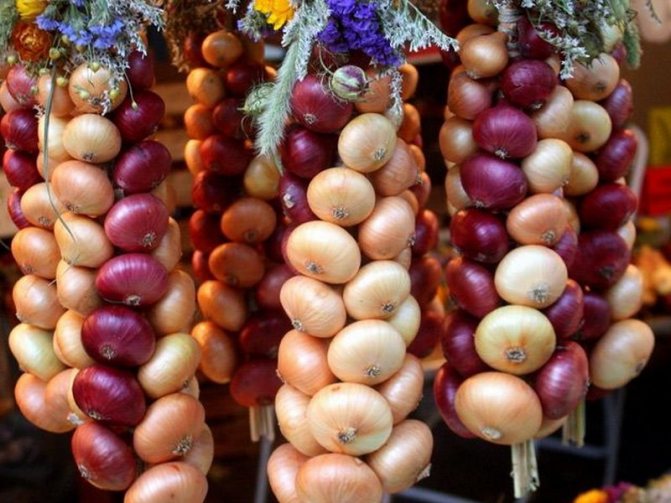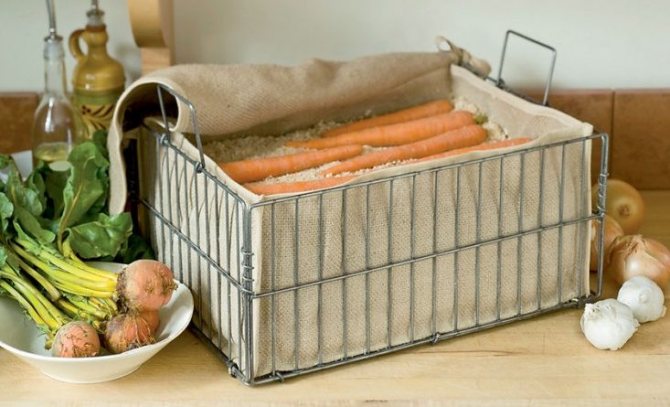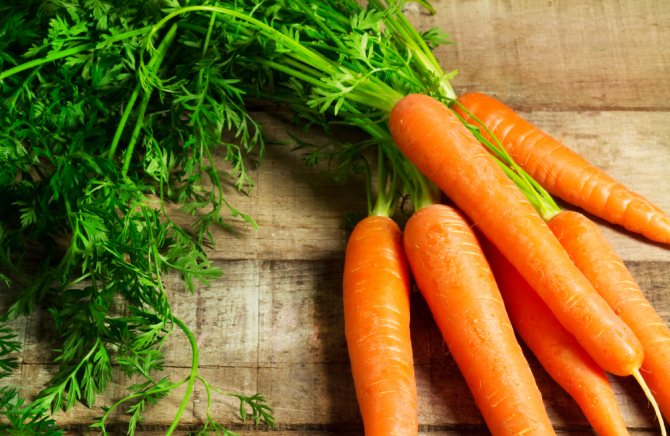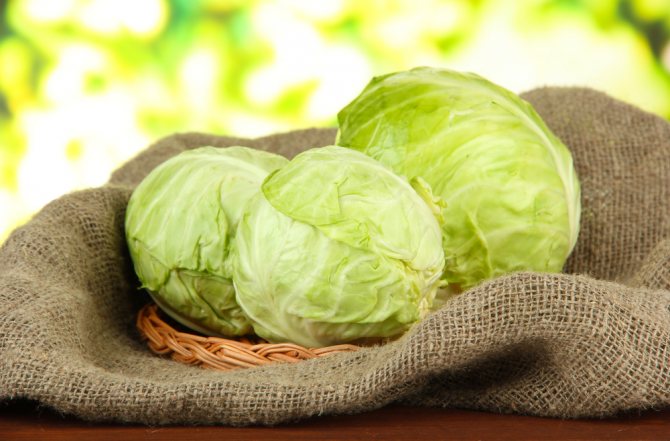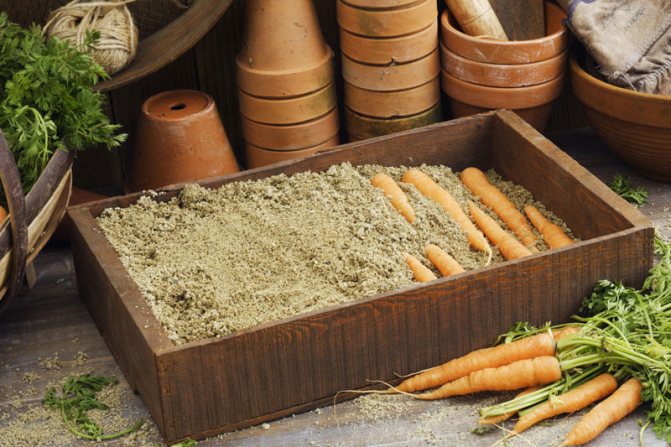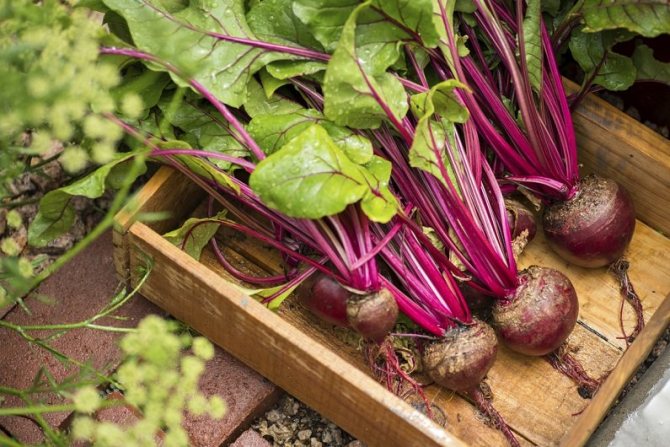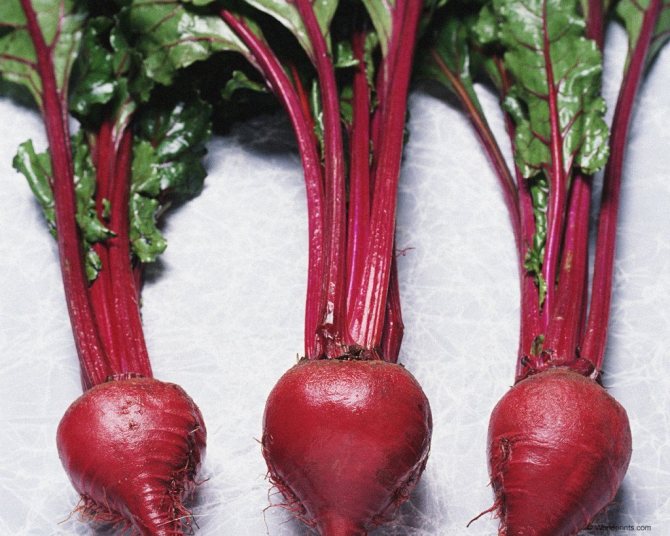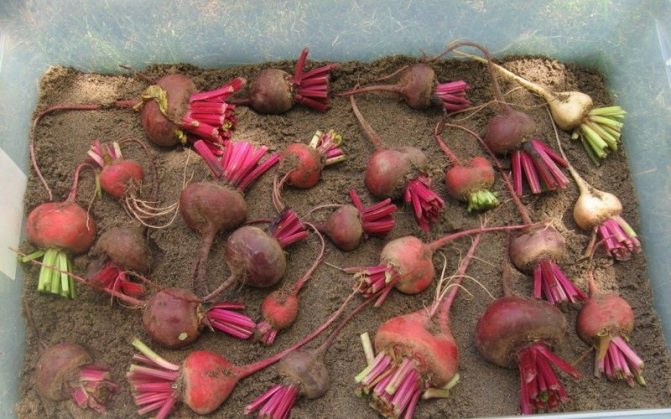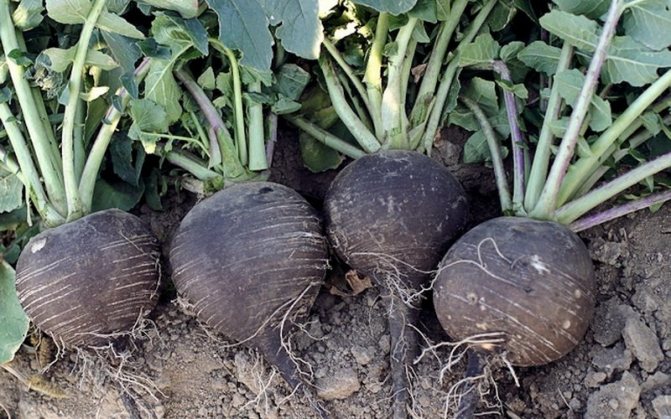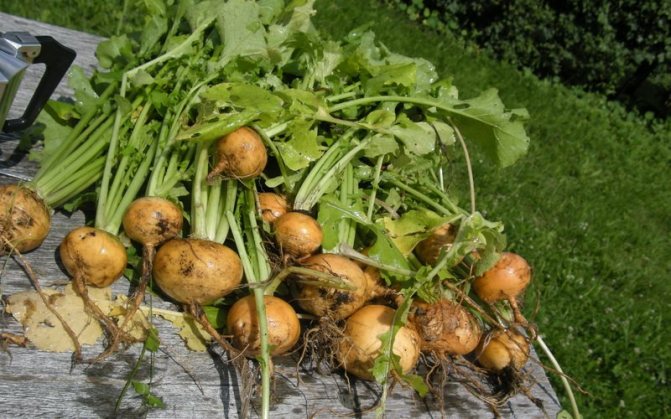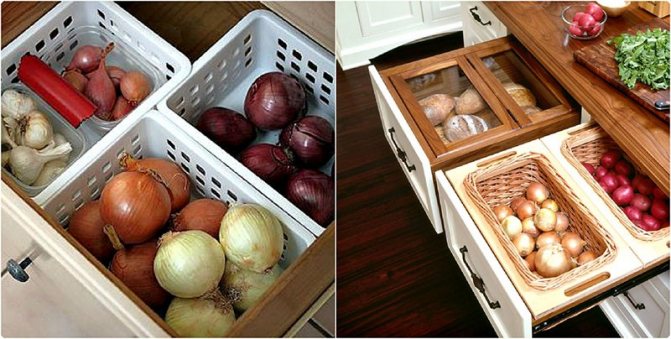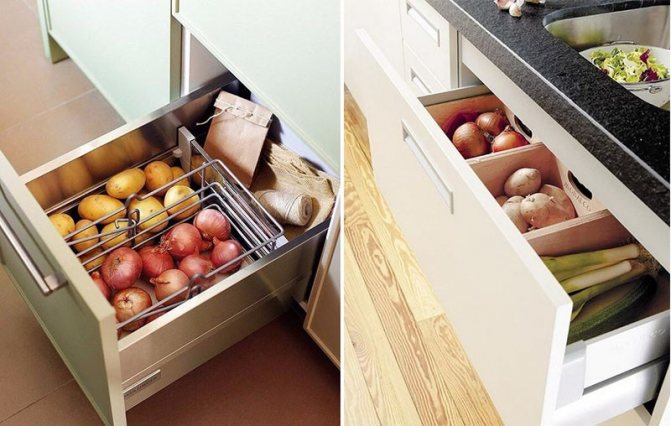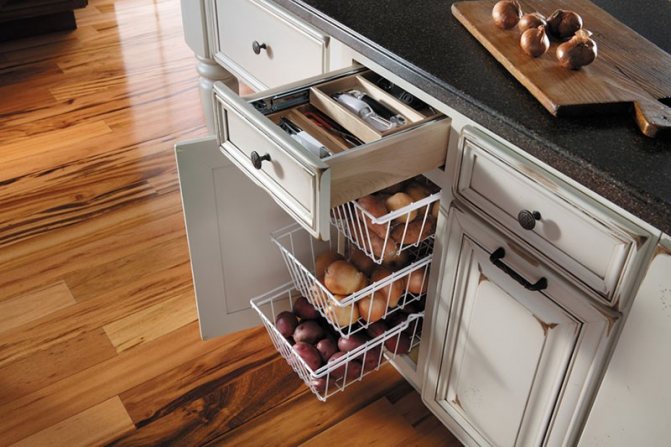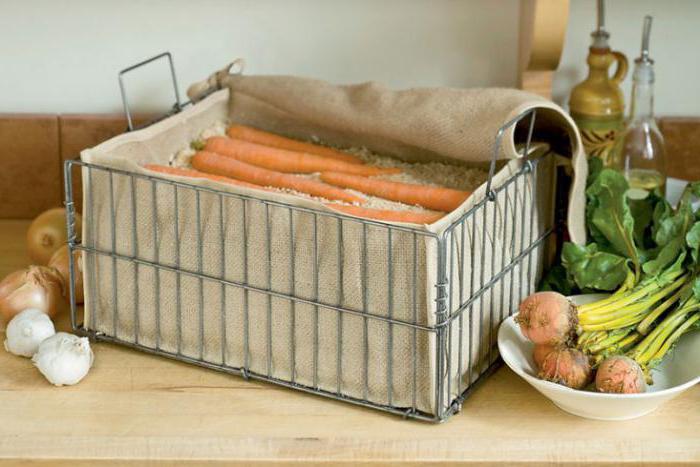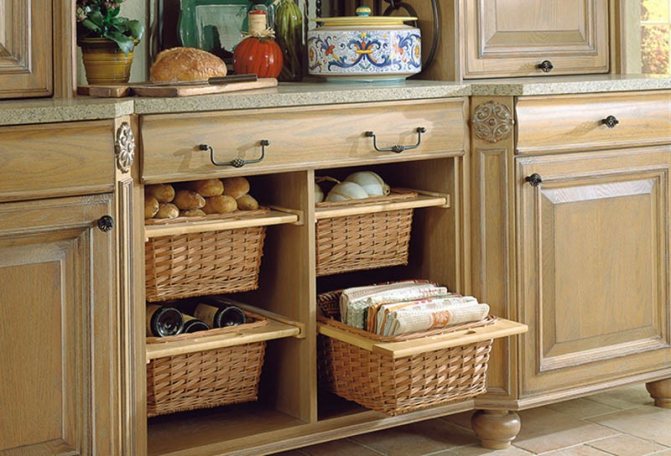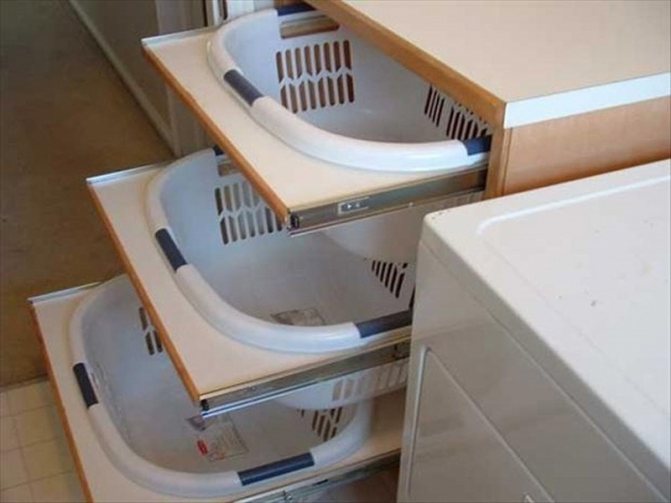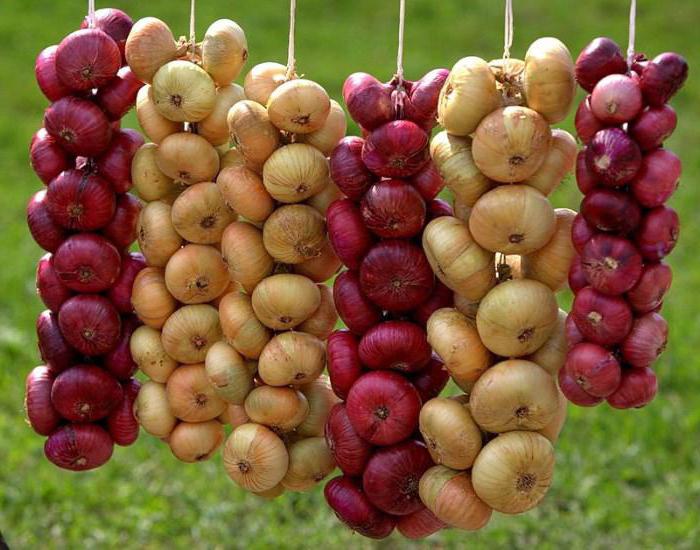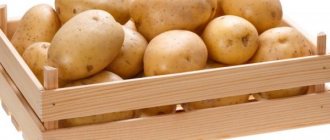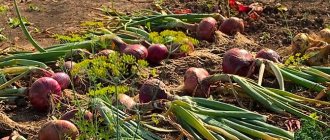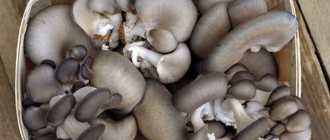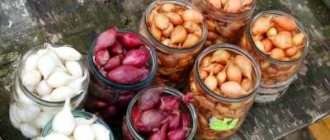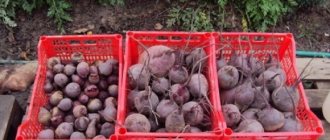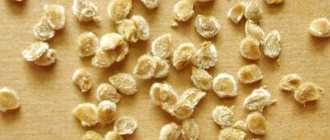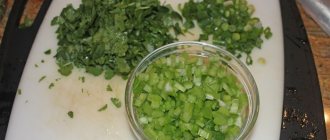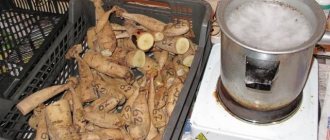- Secrets of storing potatoes in an apartment
- Beetroot storage: popular ways
- Can cabbage be preserved in winter?
- How are onions and garlic stored?
- Storing squash and pumpkin in winter
- Storing carrots in winter: what you need to know?
- Storing bell peppers: features
- Conclusion
Autumn is the time for harvesting on your own plot or in the country. Knowing how to store vegetables at home in winter, you can save your harvest and enjoy fresh fruits in the cold season even in the absence of special vegetable stores or a cellar. But it must be remembered that during the entire period, the products will need to be sorted out several times and get rid of spoiled copies. It is also important for the hostess to pay attention to the fact that only healthy and ripe fruits are subject to winter storage. Those vegetables that are not ripe or, conversely, despised, have signs of damage or damage by insects, are rejected.
Before storage, vegetables are sorted out and dried. Storing vegetables in winter is done in a dry and well-ventilated area. And in order to get rid of excess moisture, you can put a box of sawdust or ash indoors.
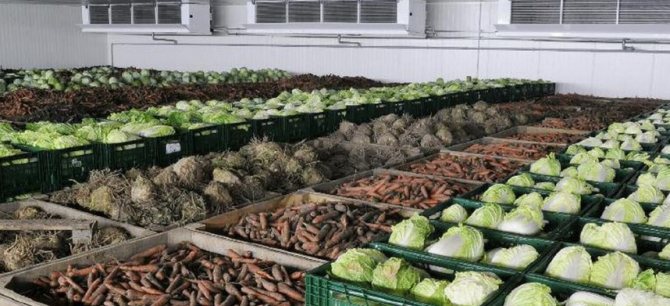
№ 1
And yet: do not store tomatoes in the refrigerator.
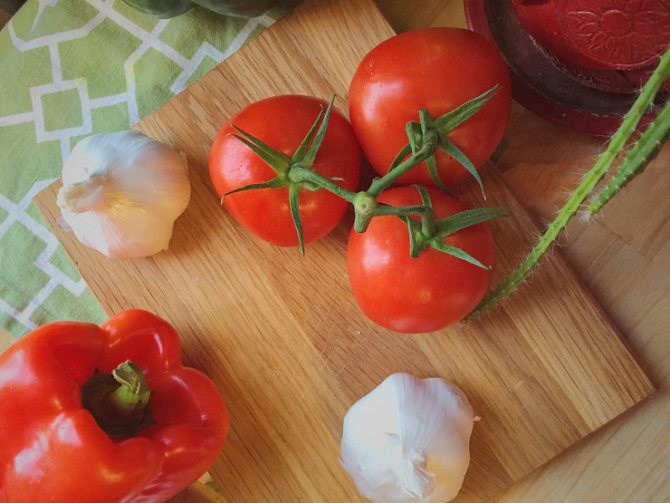

They should be kept at room temperature, unless they have started to over-ripen or have been sliced. When stored in the refrigerator, tomatoes lose their flavor and aroma and become loose. Store well in a cardboard box or directly on the kitchen counter (when space permits), covered with a towel to protect against fruit flies.
How are onions and garlic stored?
Maintaining a good harvest of onions is not the most difficult task, but you need to take into account the characteristics of this product. Best suited for winter storage are yellow onions that have no signs of deterioration or damage.
First of all, you need to dry the onions well in a dry and well-ventilated area. Especially if the harvesting of the fruit was carried out in the rain. Onions can be dried for 10-12 days without trimming the feathers. When the bulbs are well dry, they can be braided and hung in the kitchen. An alternative is to put the bulbs in an old but clean nylon stocking. It can be hung on a nail by the toe, and the bottom can be tied with a knot or string, so that later you can untie and take out one onion at a time.
Also, the crop harvested in rainy weather must be peeled, carefully trimmed the roots and feathers, leaving a 2-3 cm long tail. Then the onion is laid out in one layer for 10-20 days to dry. During this time, it will develop a new single layer of husk. After that, it can be stored in the entire clean bag in a warm and dry place. Usually in an apartment, onions are stored at a temperature of 18-25 degrees. If the temperature is lower, it can give an arrow.
When it comes to storing garlic, opinions are divided. Some housewives believe that it is much easier to store it than onions, while others, on the contrary, are more difficult. Despite this, there are many ways to preserve the "brother" of the bow:
- The heads of garlic can be put into a cloth bag that has been previously soaked in salt water and dried.- Each head of garlic is dipped in molten paraffin to form a kind of dense cover that protects the garlic cloves from moisture loss. - Folding the peeled heads of garlic into a glass jar filled to the brim with flour. The container can be stored in the kitchen cabinet. - If there is not so much garlic, then you can peel the cloves and dip them in sunflower oil. As a result, it will acquire a pleasant taste and aroma, and the garlic itself will be well preserved.
№ 2
Do not repeat after shopping
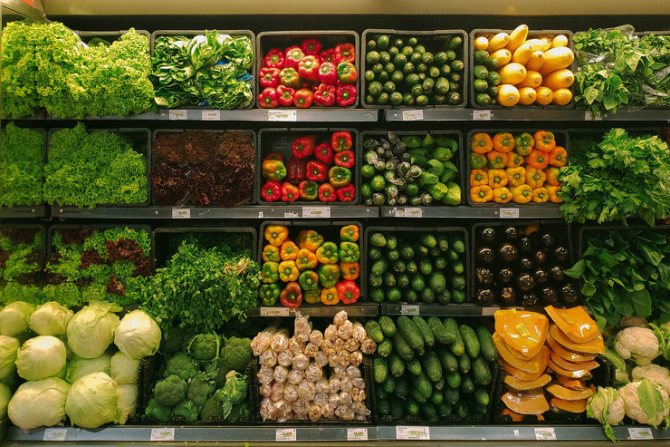

The way a product is stored on supermarket shelves does not mean that this is how you should store it at home. The goods on the shelves are often swapped to stimulate consumer demand, which is why salads and greens can often be seen on regular shelves. However, this is not correct. Salads and greens should always remain in the refrigerator unless you want them to wither the next day.
Cabbage
I store white and blue cabbage in a cool place, wrapping the cabbage in paper. I don't remember where I heard this advice, but I liked the fact that it almost does not deteriorate (the top leaves dry out a little). And so that it does not take up much space in the refrigerator, I fold it on the balcony, wrapping each head of cabbage in paper. Do not use newspapers, paint from printing can be absorbed into the vegetable, and it is very dangerous to use such products.
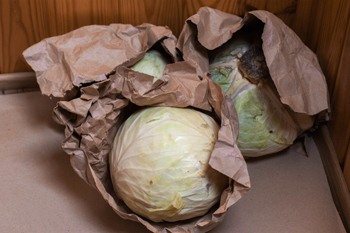

№ 3
Do not put watermelon in the refrigerator
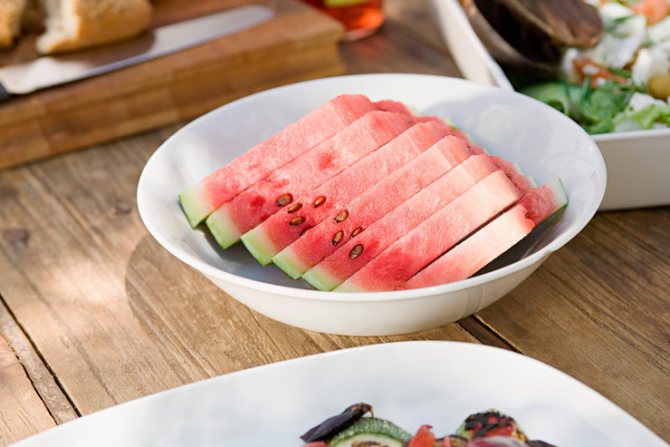

Of course, eating a warm watermelon is not tasty, but you cannot keep it in the refrigerator for a long time. On the third day, at low storage temperatures, the watermelon will begin to lose its color and aroma, so you need to eat it in a couple of days. The cut melon should be immediately refrigerated for safety reasons.
Potatoes
Storing potatoes is made difficult by the fact that in an apartment they either turn green or shake. Therefore, it is recommended to keep it in a cool and dark place in order to reduce the release of moisture and avoid greening of the skin. First of all, the potatoes must be thoroughly dried and the spoiled tubers must be removed.
For storage, it is best to put the tubers in boxes and put them on the balcony. And to reduce the amount of moisture released, beets can be placed on top. Beets absorb excess moisture without spoiling themselves. With the onset of cold weather, it is necessary to insulate boxes with potatoes, and when severe cold weather sets in, they should be brought into the apartment and left in a cool, dark place (for example, at the front door or balcony).
To avoid rotting, potatoes can be sprinkled with rowan leaves (about half a kilogram of leaves per 20 kg of potatoes).
Also, in a comfortable apartment, potatoes can be stored in a special three-layer bag made of some kind of non-woven material. In such bags, potatoes breathe well and are preserved.
№ 4
Do not store zucchini in the coldest areas of the refrigerator.
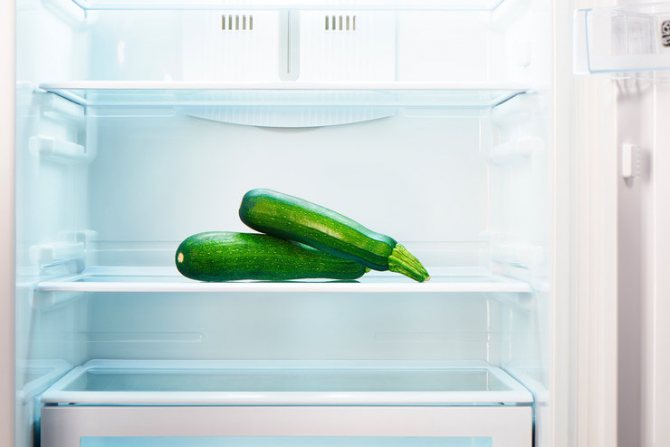

Zucchini should be kept cool, but not frozen. It is better to place them in the doors or on the top shelf of the refrigerator, where the temperature is slightly higher. To prevent the zucchini from freezing, you can put them in a bag or wrap them in a paper towel, and you need to eat them within five days.
Secrets of storing potatoes in an apartment
Not all summer residents have the opportunity to store their own potatoes in the basement or in the cellar, and they have to do this in the apartment. Moreover, we are talking about potatoes, which were grown "for food", and about seed potatoes.
First of all, it is necessary to prepare the crop for storage. To do this, the potatoes must be placed in a dark, dry and well-ventilated area for several days to dry. Then it is necessary to select fruits with damage, traces of damage and rot - they will need to be consumed first, and completely spoiled ones - thrown away.
It is important to remember that cold and humid conditions for storing potatoes are not suitable: starch begins to sugar and mold appears on the tubers.In a warm place, the potatoes begin to germinate quickly, and when in the light, they turn green, which indicates the presence of poisonous corned beef. The optimum temperature for storing tubers in winter is + 2 + 3 degrees and air humidity 85-90%. Therefore, if possible, it is worth sending potatoes for the winter to the cellar or to an unheated balcony before the onset of frost. It is best to place the tubers in perforated wooden or plastic boxes to allow air to circulate. It is necessary to place boxes at a height of 15 cm from the floor.
To preserve the harvest of vegetables, you need to adhere to the following recommendations:
- Early varieties of potatoes can be eaten very first from the beginning of autumn, as they begin to sprout by November. It is better to break off the sprouts right away, since they take a lot of nutrients and moisture from the tuber. It is also believed that such potatoes are becoming less healthy. - Potatoes of mid-early varieties are used in the second place, and potatoes of mid-season and late varieties - in the last, since they sprout only with the arrival of spring. - Seed potatoes can be stored in 3 or 5 liter glass jars by carefully folding the tubers inside the container and tying the neck with a cotton cloth. After that, the jars can be stored on the windowsill without fear that the potatoes will deteriorate.
№ 5
Do not refrigerate cucumbers and eggplants.
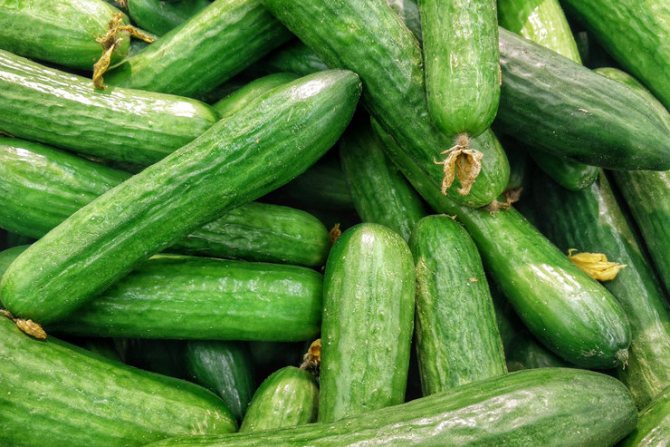

These vegetables also prefer room temperature. If eggplants are stored at cold temperatures for more than a week, they will lose color and become susceptible to damage of any kind. Cucumbers behave the same way on the second and third day. They can be stored at low temperatures for about three days, but if you took them out of the refrigerator, it is best to use them right away.
Storing squash and pumpkin in winter
The storage of these fruits should be done after they are well ripe. If the harvest was carried out in rainy weather, then the vegetables will not be stored for a long time, and it is better to use them right away for cooking or spinning. And if the pumpkin and zucchini were harvested in sunny weather, you don't have to worry about the harvest: it will definitely be preserved throughout the winter. The main thing is, when cutting off the fruits, leave a small tail about 3 cm long. Products must be stored in an upright position. You can store pumpkins and zucchini on cabinets, under the bed on the floor, on the refrigerator, and in other warm and dry places.
№ 6
If the berries start to spoil, freeze
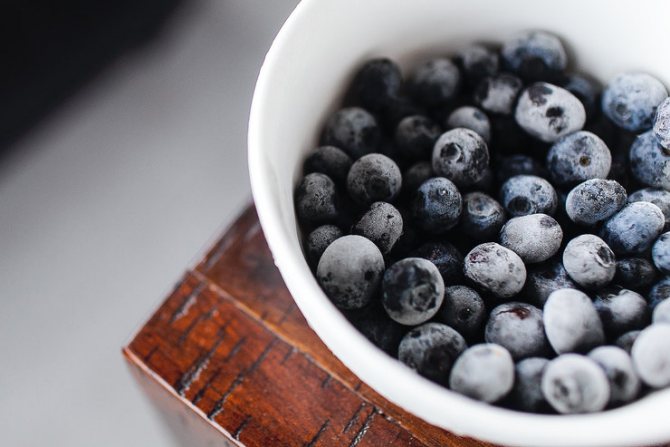

Eat raspberries, strawberries, strawberries, or blackberries within two days. Blueberries and blueberries can be stored for up to 10 days, but more often they last no more than a week. If you feel that the berries are beginning to sour and flow, do not throw away, transfer to a bag and place in the freezer. They are perfect for fruit drinks and smoothies.
By the way: the same can be done with bananas, but you need to remove the skin from them before freezing.
Carrot
I never my carrots, I keep the same that I dug in the garden, that is, in the ground, sand or clay. The fact is that carrots have a thin skin and, having washed the vegetable, you shorten its shelf life. Carrots are perfectly stored in the refrigerator in a plastic bag at a temperature of +2 - +5 degrees for two to three weeks.
If you have a private house, basement or cellar, then do not be too lazy to make a box of sand for the carrots and store it in it (by completely immersing the carrots in the sand; with this storage, the carrots, after being removed from the sand, are no different from those just dug out in the garden) ...
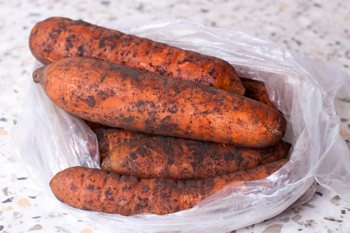

№ 7
Do not store greens without water
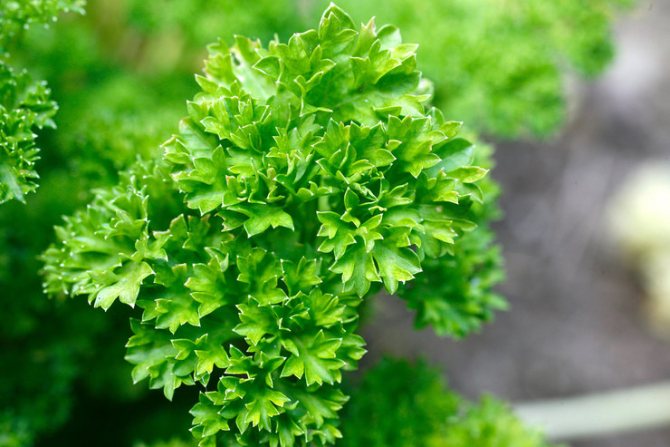

Most often, we store vegetables in a packaging bag or in cling film, not knowing what is a better way. Greens can be stored as a bouquet of flowers by placing them in a glass of water and covered with a bag on top. It is better to change the water on occasion and cut the stems a little so that they do not rot. When it comes to refrigeration, most herbs need to be refrigerated, except for basil, which is very sensitive to cold.It is better to buy it in small quantities and put it in a glass on the kitchen countertop.
How to store vegetables in winter
Harvesting carrots, beets and potatoes in summer cottages is coming to an end - it's time to think about the proper storage of vegetables in winter. Can potatoes and root vegetables be stored at home? What rules should be followed when storing onions and garlic? How to store cabbage?
Even the absence of special vegetable stores does not become an obstacle, since it is possible to store the crop for a long time at home, if you adhere to certain rules.
There are basic rules for storing vegetables:
- Only healthy specimens can be stored, without signs of infection, insect damage and external chips. Overripe and unripe vegetables are also discarded.
- It is necessary to lay vegetables (onions, beets, cabbage and carrots) only of late and medium late varieties for long-term storage.
- Dry vegetables thoroughly.
- The container in which vegetables are stored must be ventilated.
- Store vegetables in a dry place.
- In damp basements, it is recommended to put sawdust or ash, which absorbs excess moisture.
In winter, the food must be sorted out several times and the spoiled copies must be thrown away.
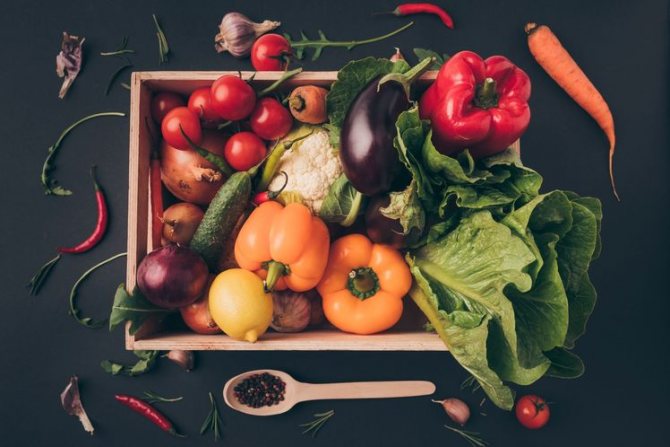

Storing cabbage
Cabbage in heads of cabbage is quite capricious for storage at home. She is shown a village cellar with all the amenities.
Cabbage is laid out on shelves away from each other. Before that, the heads of cabbage are wrapped in paper. You can hang the heads from the ceiling, tying them to a stretched fishing line by the stalks.
The best conditions for storing fresh cabbage are temperatures from -1 to + 1 ° C, relative air humidity 90–98%.
An interesting way of storing cabbage: ordinary plastic curlers are inserted into the perforated heads of cabbage, and then the cabbage is placed in the cellar or in the refrigerator, where it is pressed down with a load that promotes gas exchange.
From time to time, the load is lifted, and then again put on the cabbage.
Another way: the non-adjacent green leaves are removed from the head of cabbage, a loop is tied to the twine stumps. Heads of cabbage are smeared with clay, diluted to the thickness of the pancake dough, so that the leaves are not visible, and hung on the street for gradual drying. Dried heads of cabbage are transferred to the cellar and hung.
Best of all, cabbage at home is preserved in sauerkraut.
And one more trick: when using a head of cabbage, you should "undress" it, gradually removing the leaves, and not cut off a part. Then the rest of the "stripped" head of cabbage will be stored much longer than the cut one.
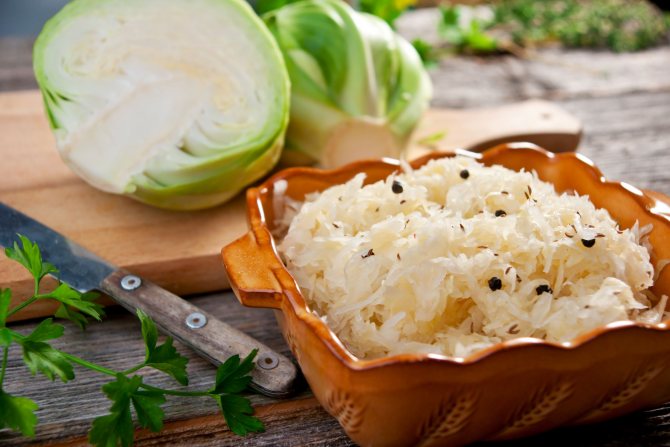

Storing carrots
If you do not have a cellar, or it is not suitable for storing carrots, arrange the root vegetables in cardboard boxes, sprinkle generously with sand or onion-garlic husks and place in the pantry. It is advisable to take the boxes of a small volume so that about 20 root crops can be placed.
You can keep carrots on the balcony in winter by putting them in glass jars, and if frost hits, the jars are covered with lids. Carrots should be of late or mid-season varieties.
There are several more options for storing carrots:
1. In plastic bags. Use bags of any capacity for storage. The bag is placed in storage and kept open.
2. In a clay barrel. The clay is stirred until sour cream is thick and the roots are immersed in it for 2-3 minutes, removed and dried. A cover is formed around the carrots, which protects against wilting and disease. Carrots in clay cases are placed in boxes or baskets. Compared to other storage methods, this one gives the least amount of waste.
3. In coniferous sawdust. Best of all, carrots are preserved in sawdust with a moisture content of 18–20%.
4. Chalk solution also helps to preserve carrots, it can be bought in hardware stores. After chalk treatment, carefully dry the carrots on paper and put them on the balcony or in the refrigerator.
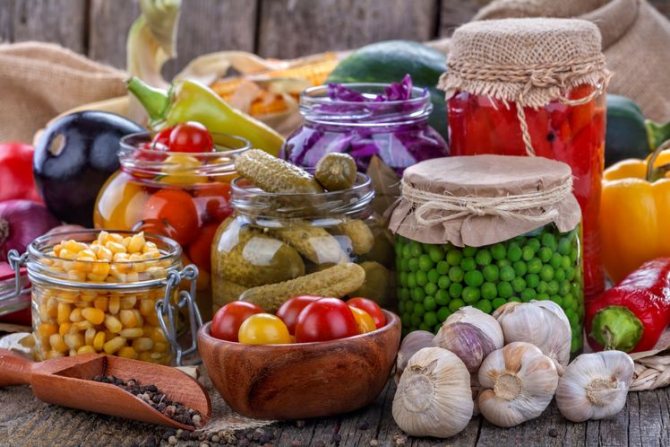

Beet storage
The best storage temperature for beets is 2-3 ° C with a humidity of 80-85%. The thick skin of beets protects well against excessive evaporation of moisture. These vegetables are stored in a loosely closed box or bag in a cool, dark place: near the balcony, on the balcony or in the hallway.
It is convenient to store beets in boxes, sprinkling with a layer of sand, peat or sawdust. You can also store in plastic bags, after covering the roots with sand or sawdust.
You can store beets at home in the refrigerator if you only have a small amount. Place it in a plastic bag and place it in the vegetable drawer of the refrigerator. The bag of beets should not be tied tightly. Beets can be stored in the refrigerator for 2-4 months.
Storing potatoes
Before storing potatoes, you need to prepare it: dry it for several days in the shade, under a canopy, with good ventilation. Then the potatoes are sorted, discarding rotten, spoiled and damaged tubers.
It deteriorates quickly if stored improperly. In a warm place, the potatoes will start to sprout, and the humidity in the refrigerator will make them moldy and wet. Potatoes cannot be stored in the light, otherwise they may turn green, which will be an indicator of the formation of poisonous corned beef.
Potatoes are best preserved at 2-3 ° C and 85-90% humidity. To create such conditions, a dry, cool, dark room is well suited, for example, a cellar or basement that does not freeze in winter. You can also use the balcony for this purpose before the onset of frost, but on condition that it is not heated.
Potatoes can be stored in boxes with small holes in the walls to allow air to enter. The boxes are placed on supports (15-20 cm above the floor) and are not pushed close to the wall.
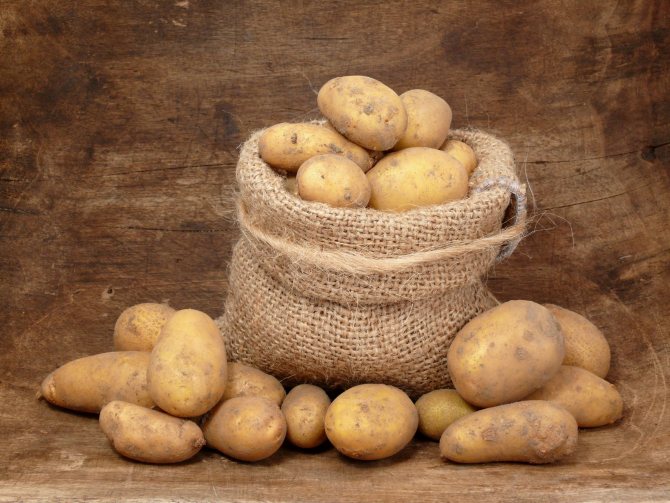

Storing onions and garlic
There are several types of onions, but for storage it is best to give preference to yellow ones. You need to choose dense bulbs without damage and with a yellow-orange peel. It is imperative to dry the bulbs.
The optimum temperature for storing onions is considered to be from three to seven degrees. The bow is well stored both in the net and in bundles that need to be tied. Take an old but clean thin nylon stocking and fill it with onions or heads of garlic. Hang it on a nail by the toe, and tie the bottom with a free knot or pinch it with a clothespin so that it is convenient to get one onion at a time. Also, wooden boxes with holes are an excellent option for storage.
Garlic is much more capricious than onions. Therefore, you have to store it with tricks. For example, each head is dipped in molten paraffin prior to storage to form a continuous shell. It will keep the garlic cloves from drying out.
You can also put unpeeled heads of garlic in a glass jar and sprinkle with dry flour, adding a layer of at least 2 cm on top.
If you don't have a lot of garlic, you can peel the cloves from the husks and put them in a jar of sunflower oil for storage - and the oil will get a pleasant aftertaste and the garlic will be perfectly preserved.
Storing sweet peppers
How to store pepper in an apartment? Peppers are freed from seeds, dried and placed in a freezer for freezing. You can freeze whole peppers by inserting one peppercorn into another, or you can cut vegetables into pieces before freezing. It is also possible to store sweet peppers for two months in a dry basement at a temperature of 10-12 ºC, if they are folded in layers in a box, overlapping each layer with thick paper.
An excellent solution in preserving the harvested rich harvest will be the use of rag bags. Only fill them in half, 35-40 centimeters. Do not tie the top.Thus, it is possible to create natural ventilation of the air.
Everyone wants to eat vegetables as fresh as possible, as it is good for the body.
Remember, that with the correct content of vegetables, valuable and biologically active substances are almost not lost in them. Most vegetables contain from 75% to 97% water, and the loss of at least 5% of water leads to wilting, vegetables lose their appearance and nutritional value, look wrinkled and flabby. And the microbes that get on the vegetables begin to multiply.
Keep your vegetables for as long as possible!
№ 8
Keep fruits and vegetables away
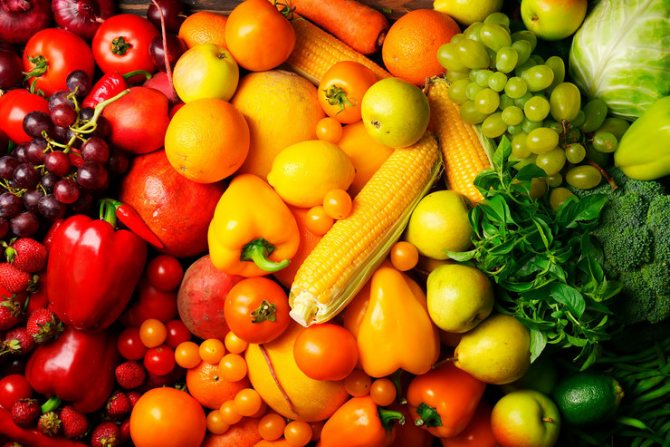

Another piece of news: vegetables and fruits should not be stored next to each other. Most fruits produce ethylene gas, which helps them ripen faster, so vegetables that are sensitive to ethylene will spoil faster.
A simple example: Apples, avocados, peaches and peppers all produce ethylene. Eggplant, lettuce, cucumber and greens are ethylene sensitive. Put the cucumbers and peppers side by side; the cucumbers will spoil faster.
Also, do not store products that produce ethylene in sealed containers - bags, containers, etc., unless you want them to ripen faster.
Keep in mind that there are fruits that simultaneously produce ethylene and themselves from it and spoil, so they can quickly overripe. These include bananas, avocados, and apples.
Proper winter storage of fruits
Undamaged fruit is suitable for storage. We put apples and pears in wooden boxes. Sprinkle fruits with dry sawdust, shavings, hay. We get a very good result from storing fruits wrapped in special paper treated with oil. This will prevent massive rotting. A good result is also obtained by processing them with glycerin. To do this, we wipe each fruit with a cloth dipped in this substance. It is advisable to keep the fruits away from strong-smelling vegetables. The optimum temperature is 0-5 degrees, and the humidity is 85-90%.
Grapes
Some of its varieties (with dense flesh and thick skin) can be stored in a dry and cool room. For this we choose the best bunches. We lay paper on dry sawdust. We spread the bunches of grapes on it in one layer. Cover the fruit with a cotton cloth. We periodically inspect the bunches, removing rotten berries.
Watermelons and melons
Store watermelons and melons indoors, placing them in one row on a wire rack. All tails should point up. We shift these fruits with dry wood shavings so that they do not touch each other. Optimum temperature: 3-5 degrees Unripe melons are suitable for storage, which will acquire the necessary ripeness during this time.
Boiled vegetables - storage nuances
In no case do not keep vegetables in the broth formed during their preparation - this will lead to a significant loss of taste. In this case, useful substances will come out of them, and useless water will take their place.
Immediately after cooking, the vegetables are thrown into a colander and further kept in the refrigerator. Among all the variety of plant products, this rule does not apply only to cauliflower: it will calmly lie in the broth for about a day.
The most correct approach is to eat cooked vegetables right away, because reheating or storage for a long time significantly impairs their taste.

